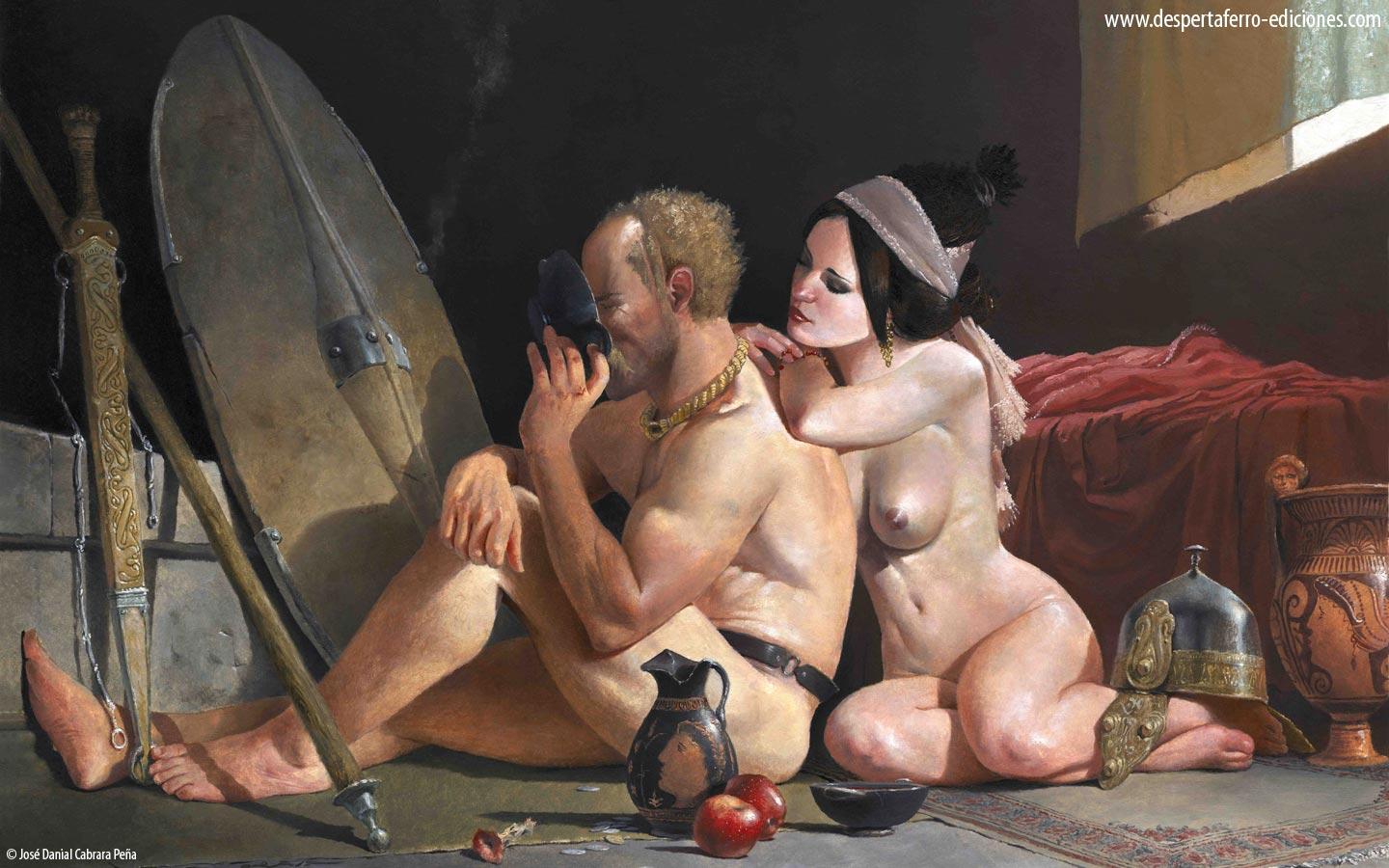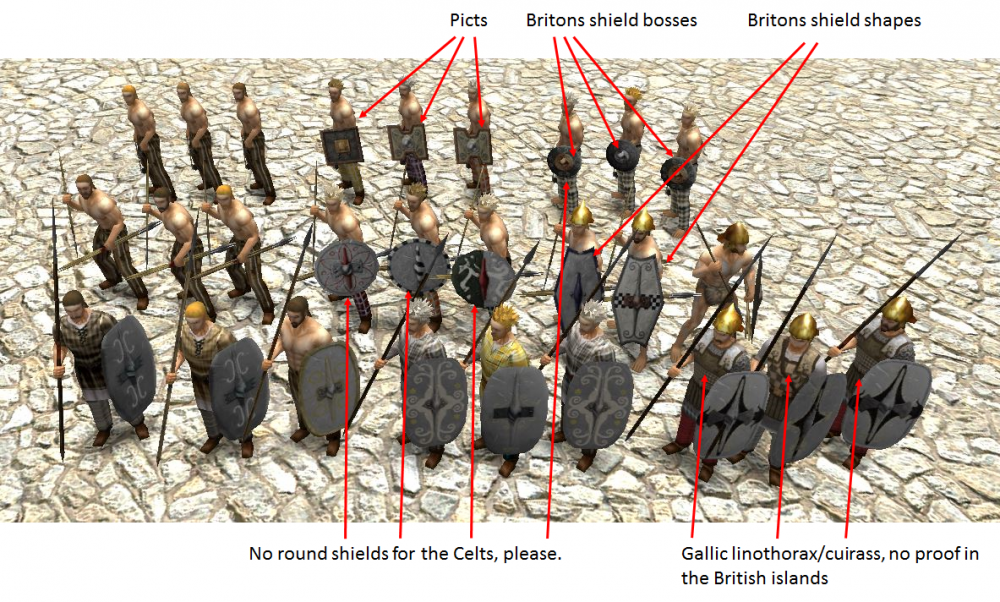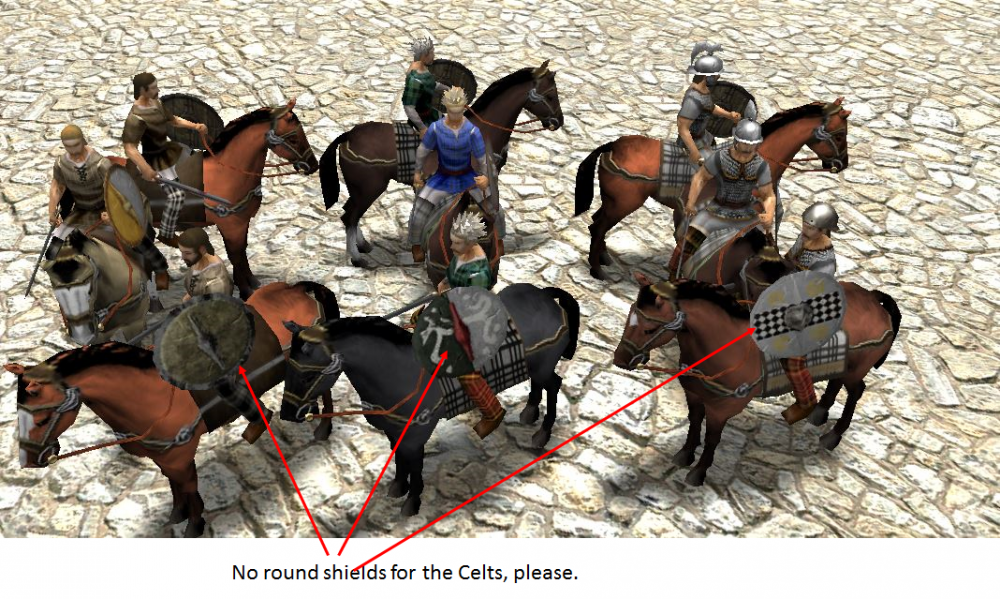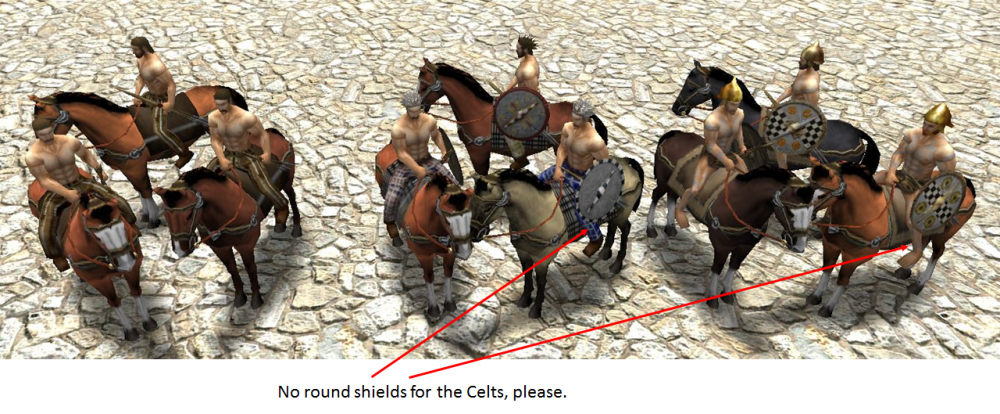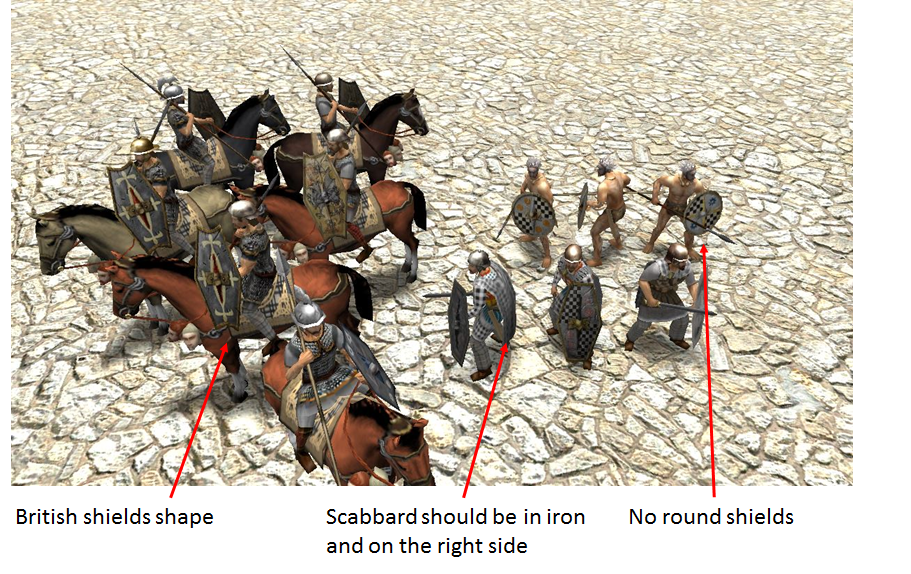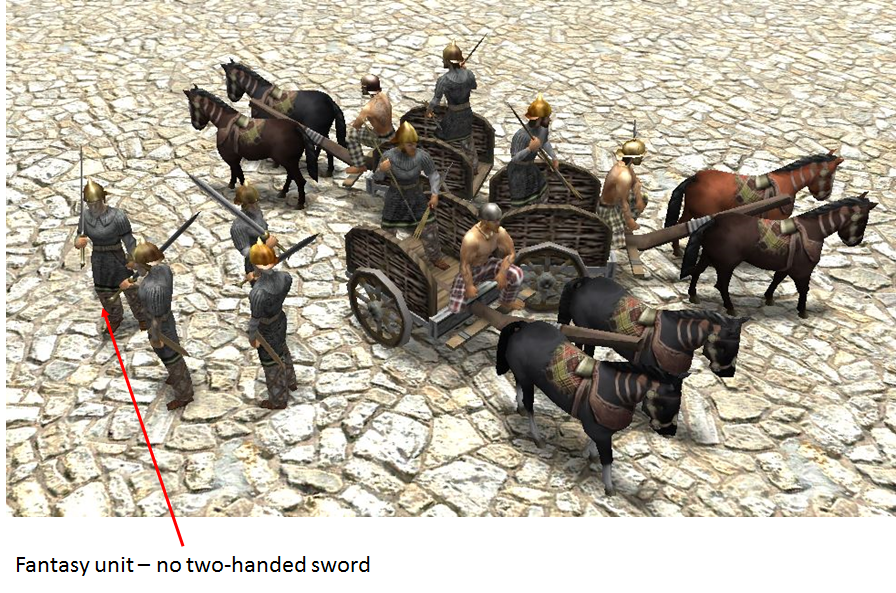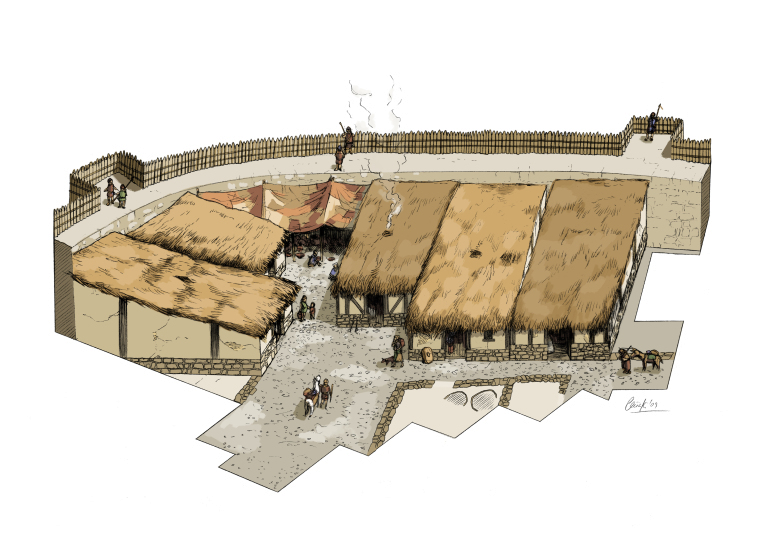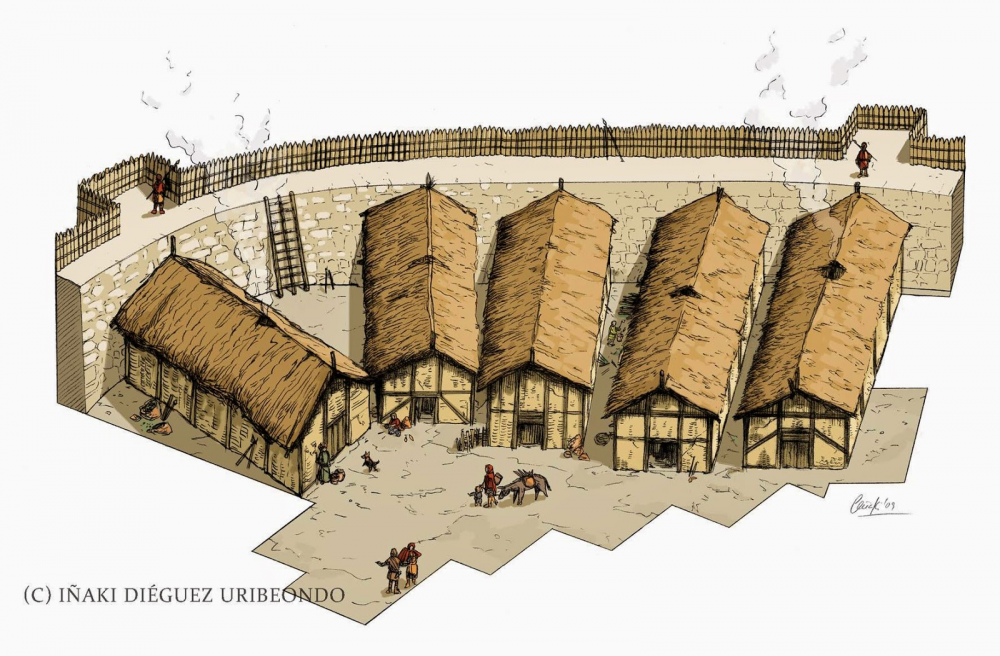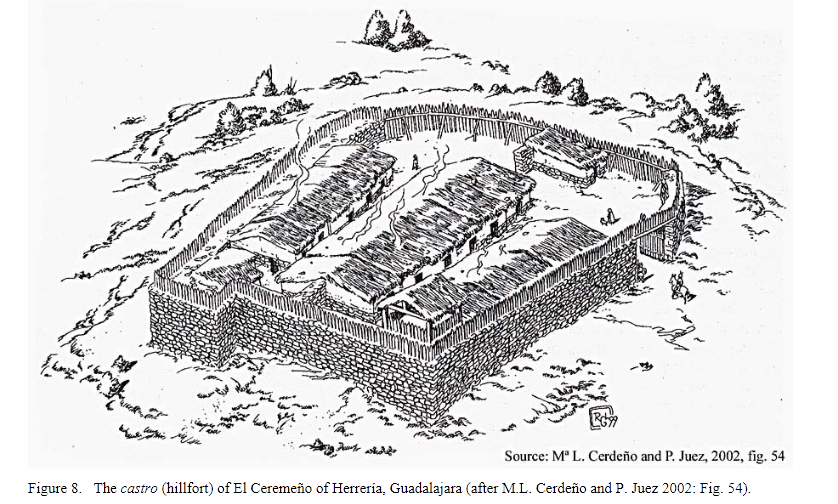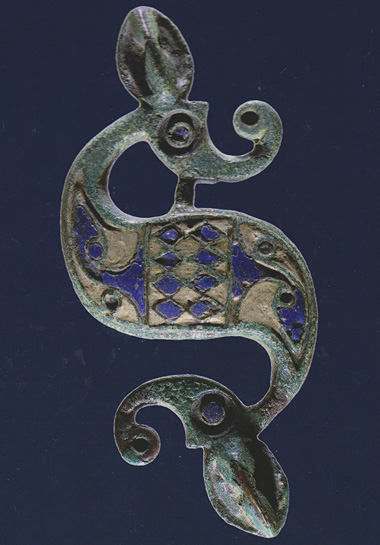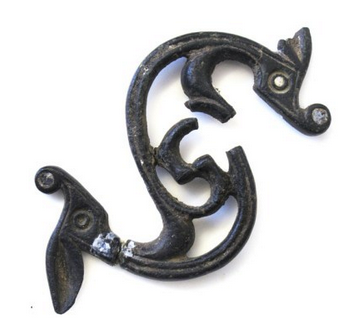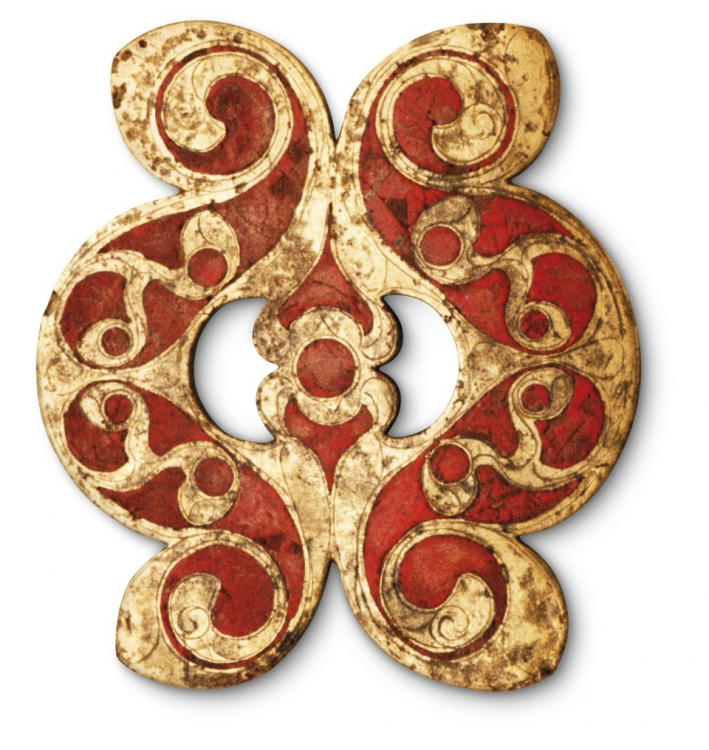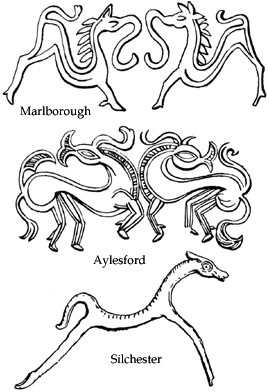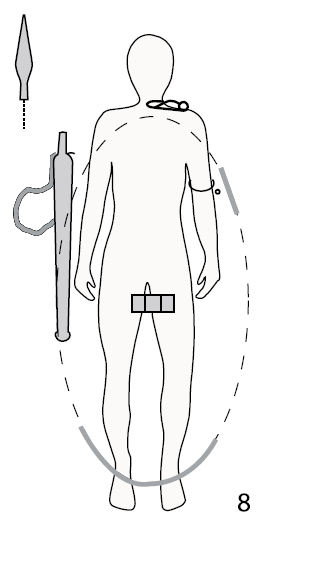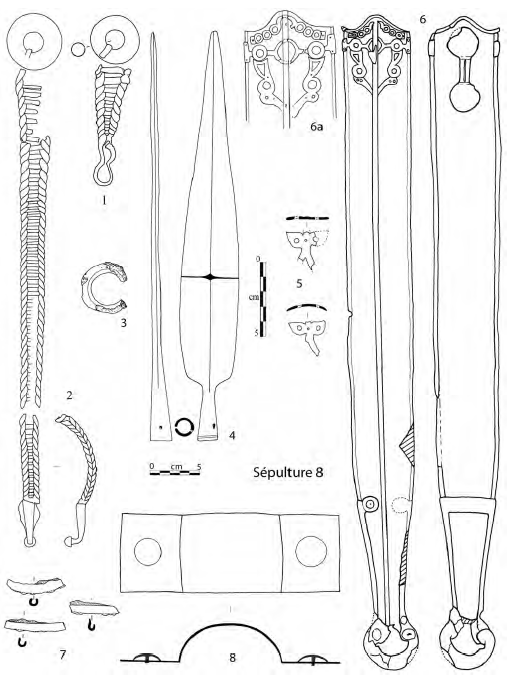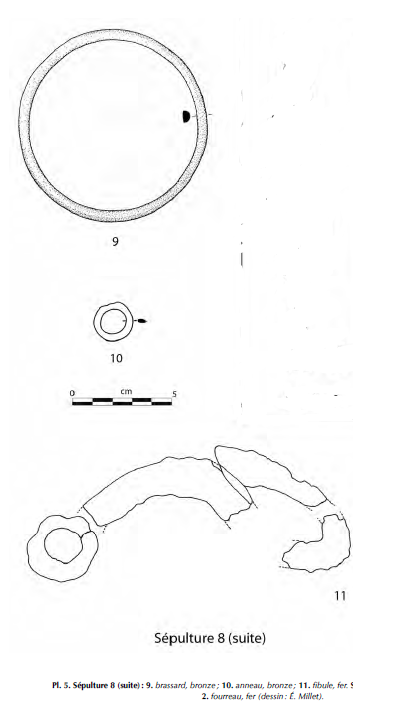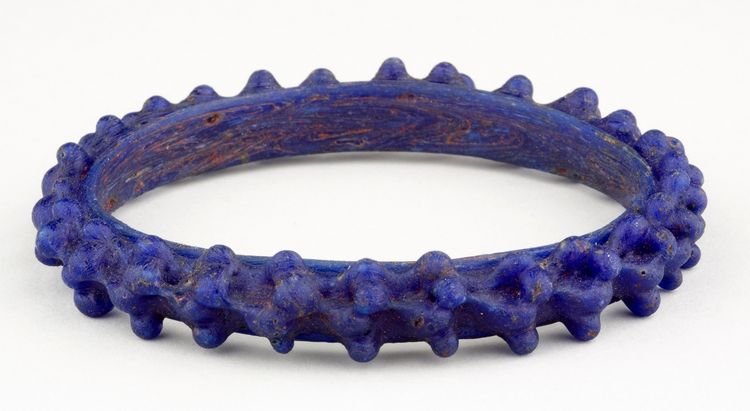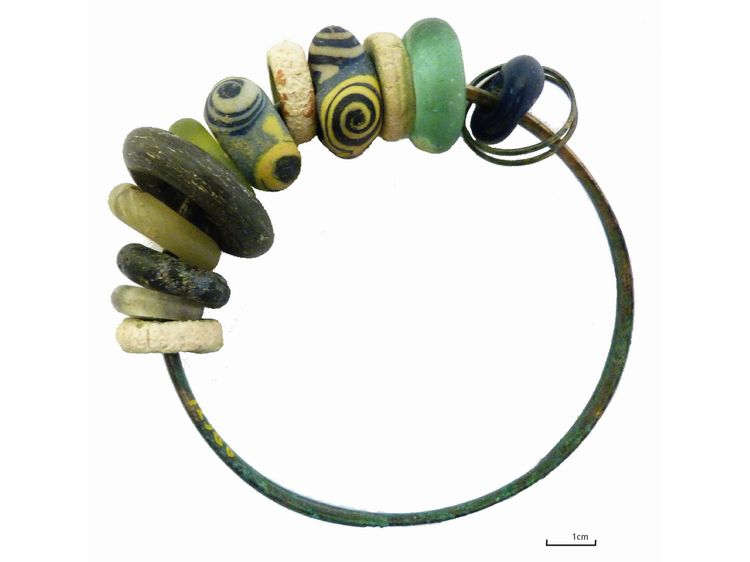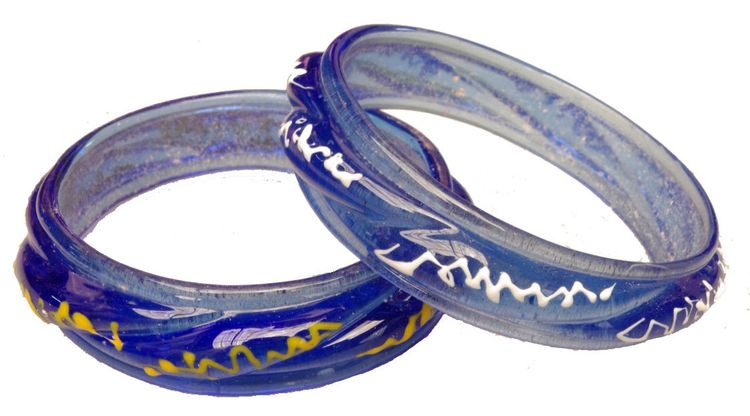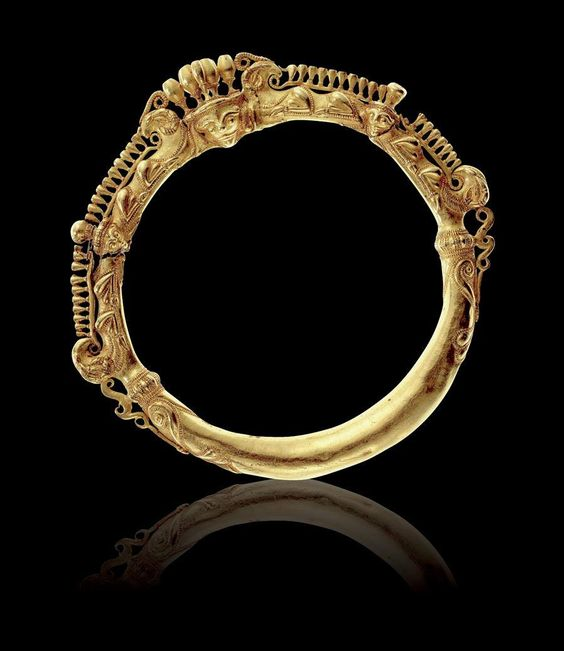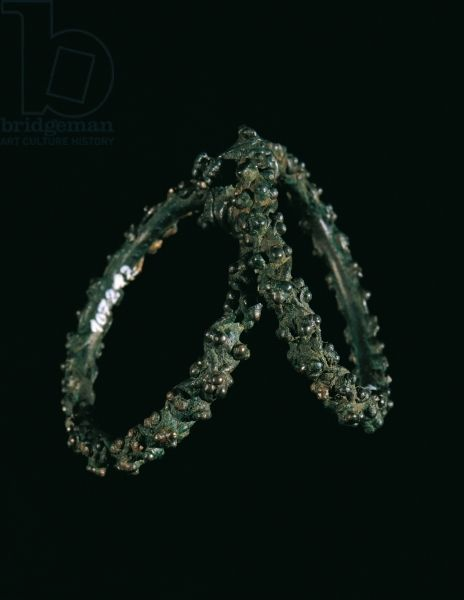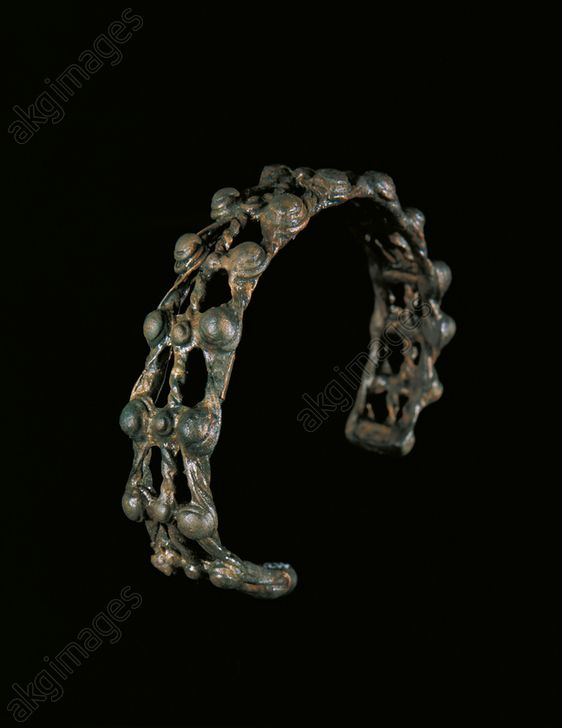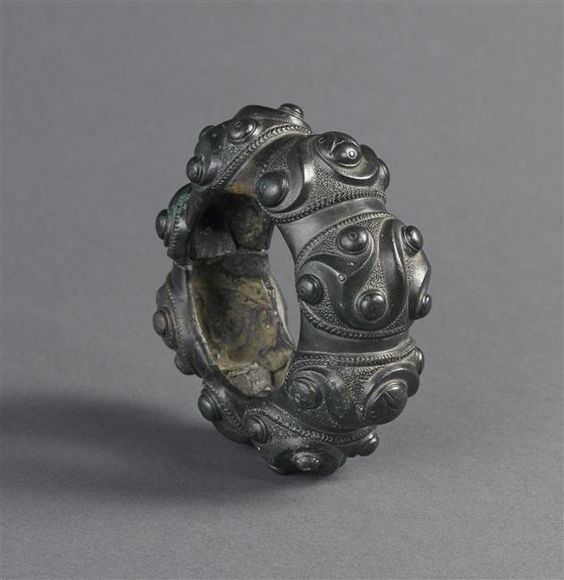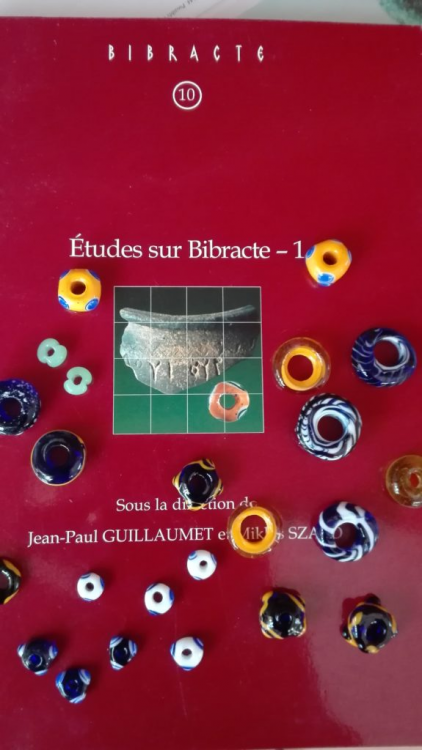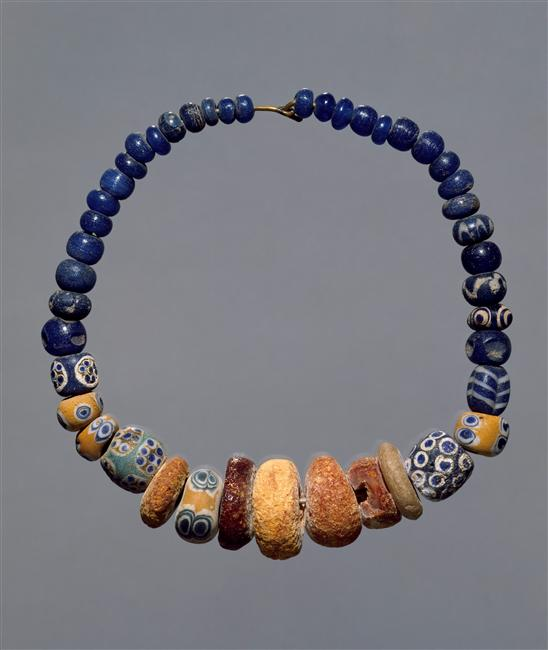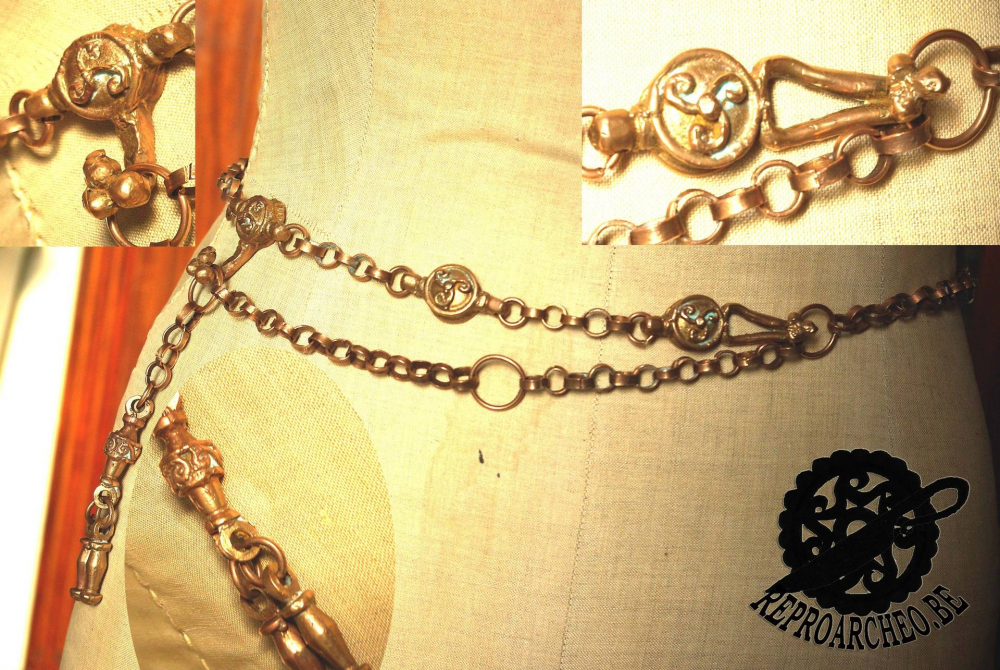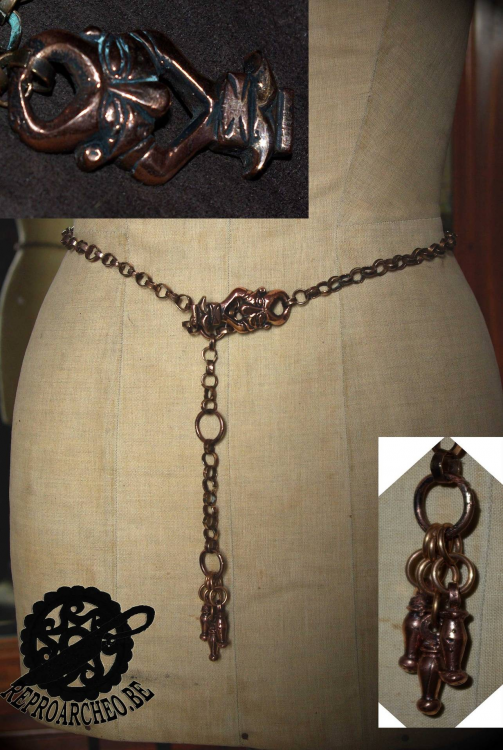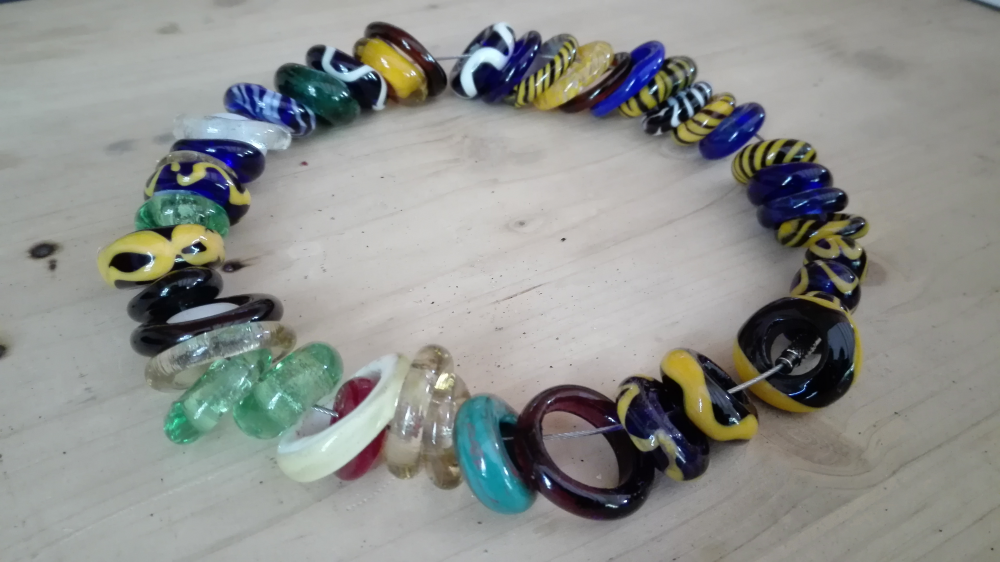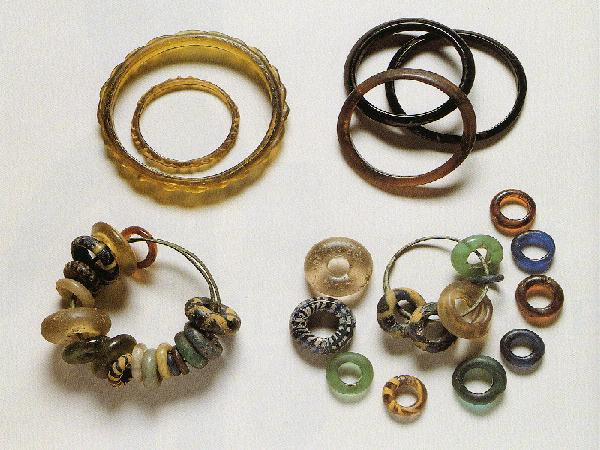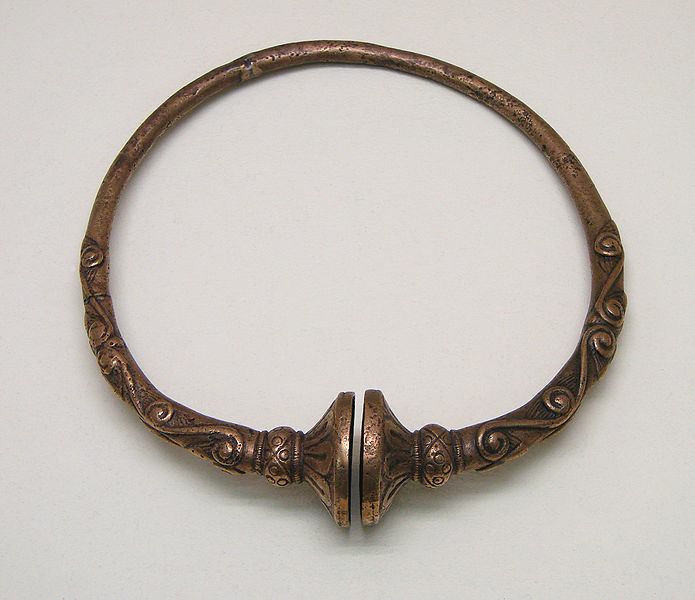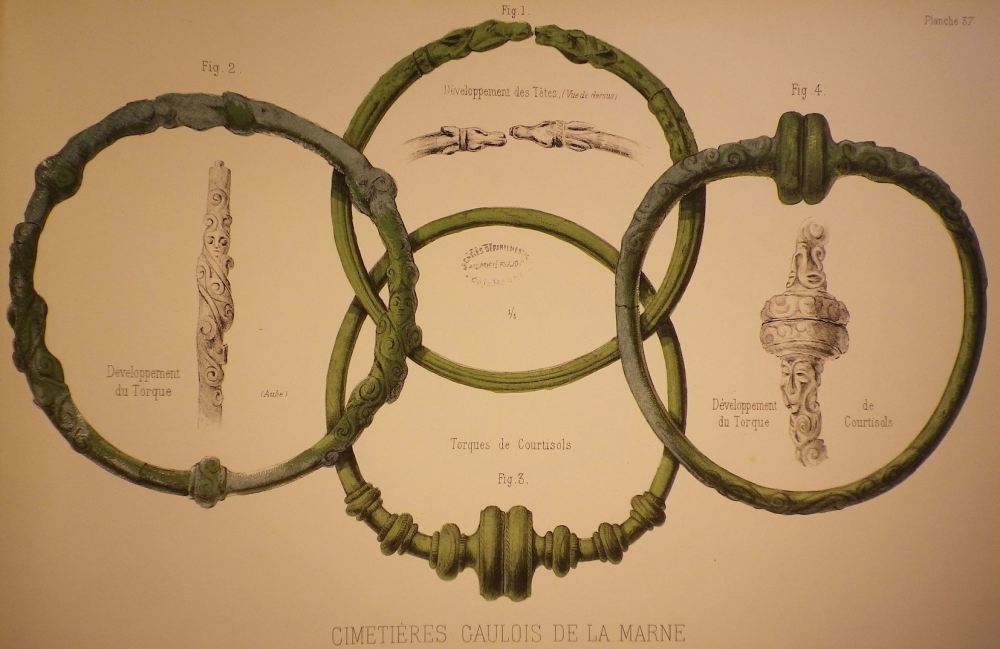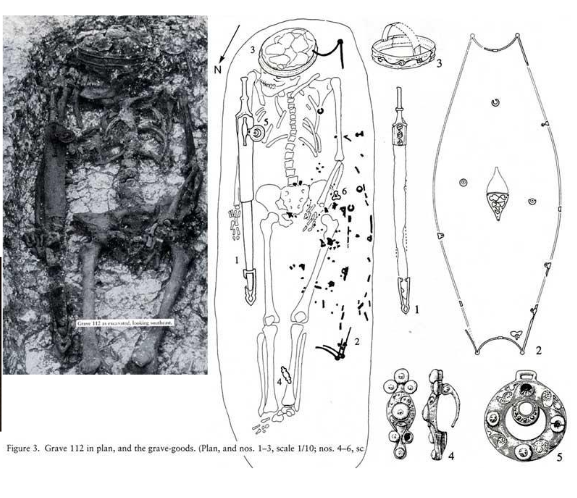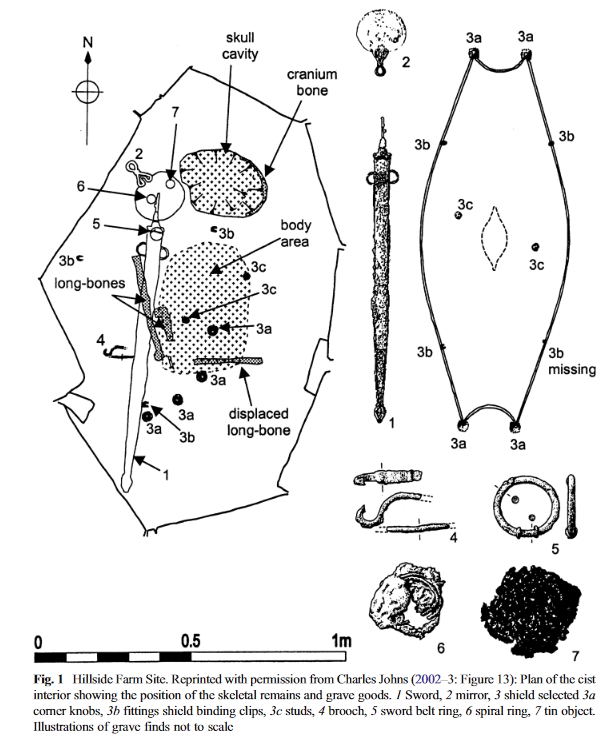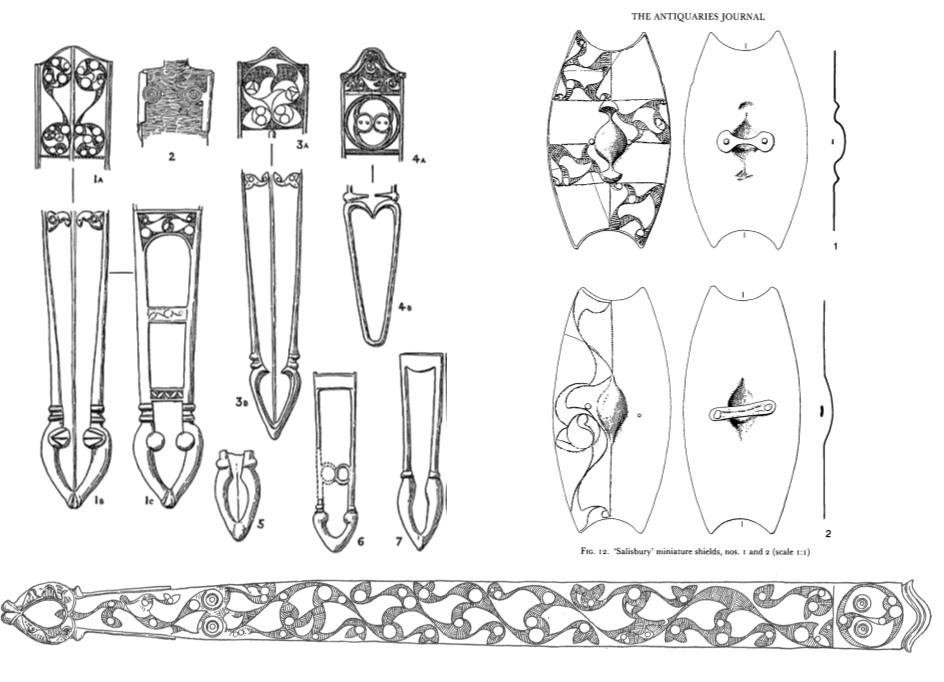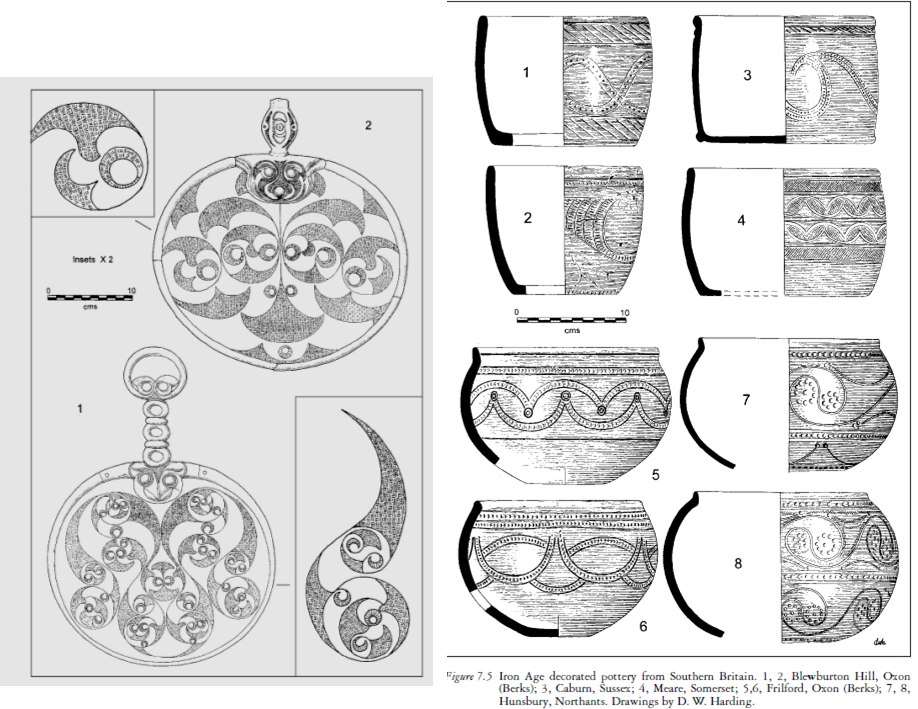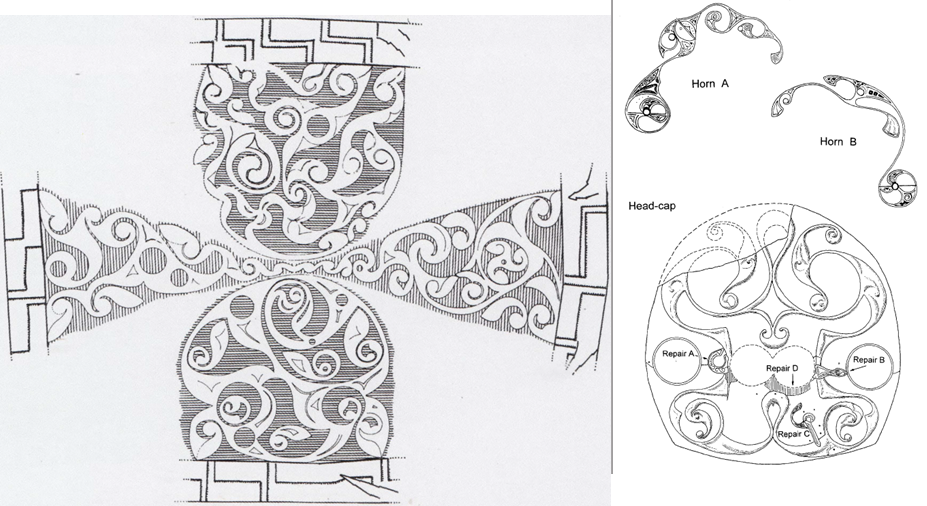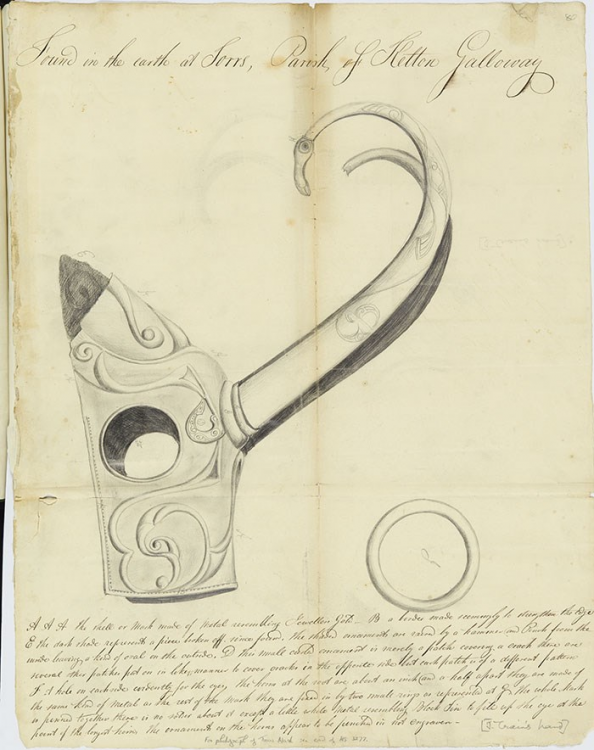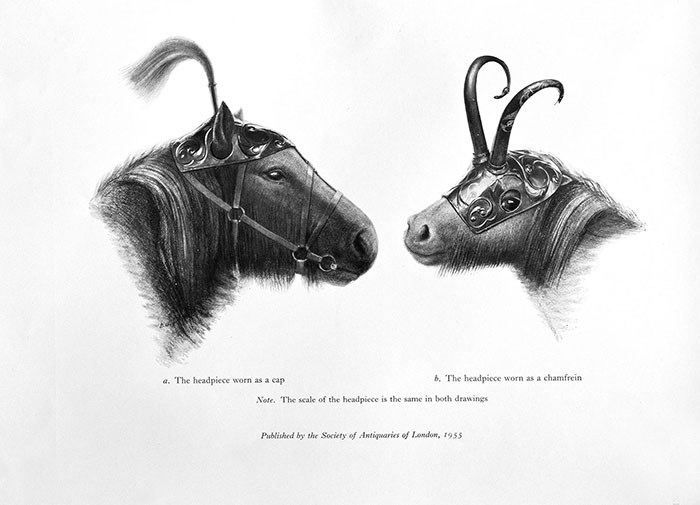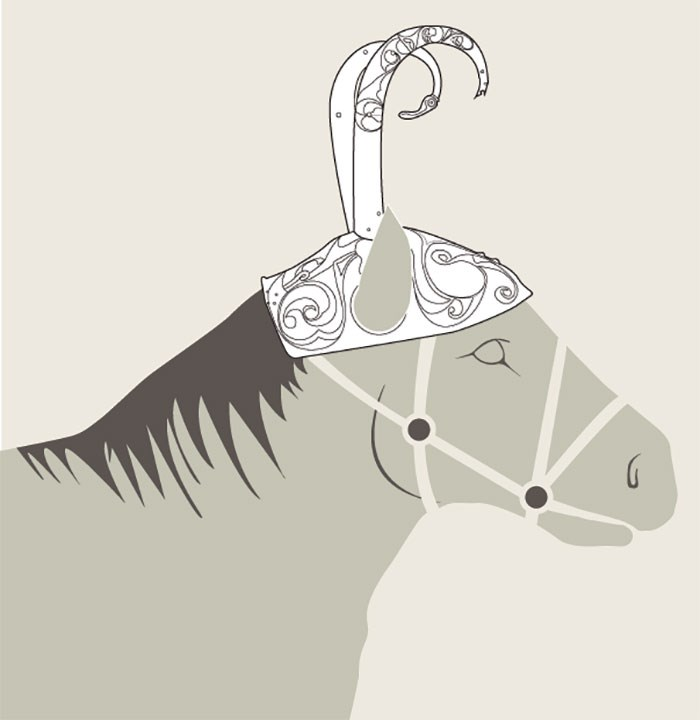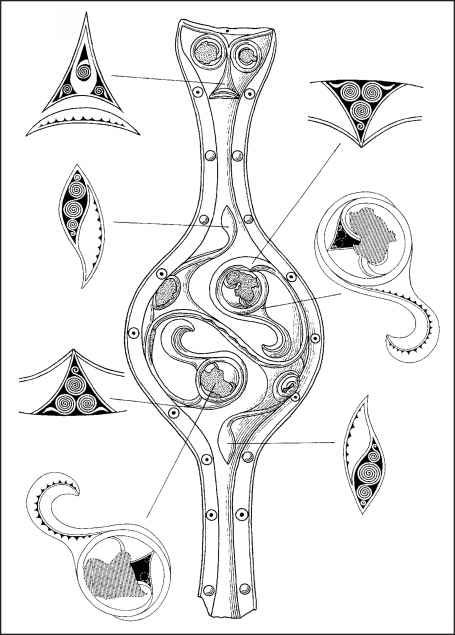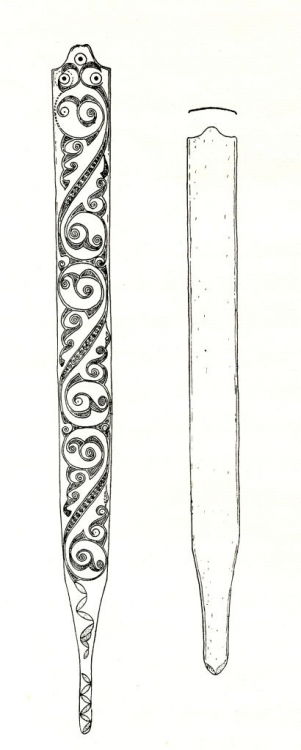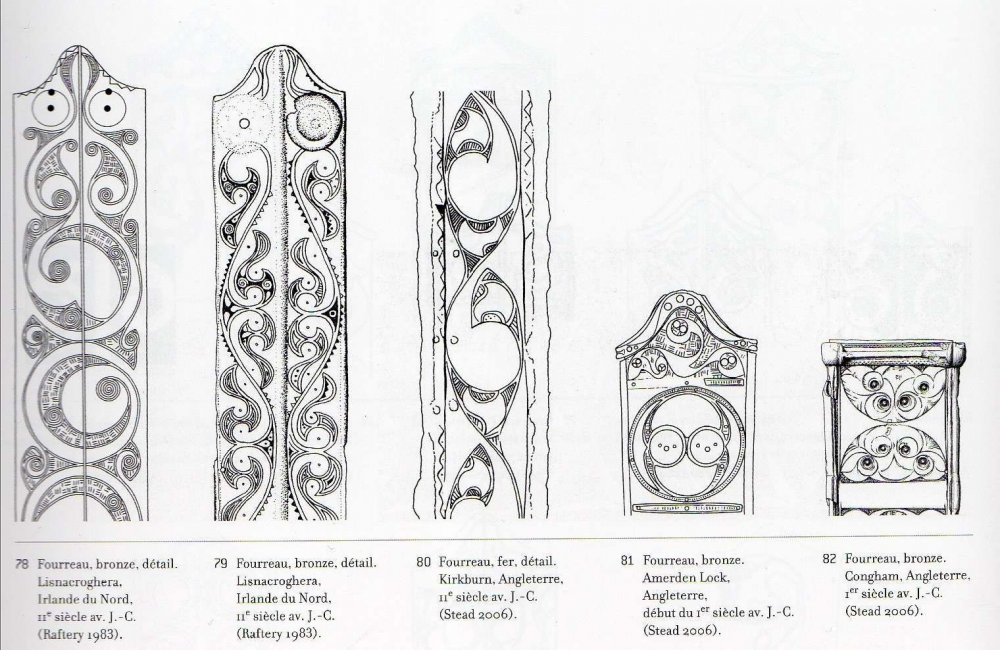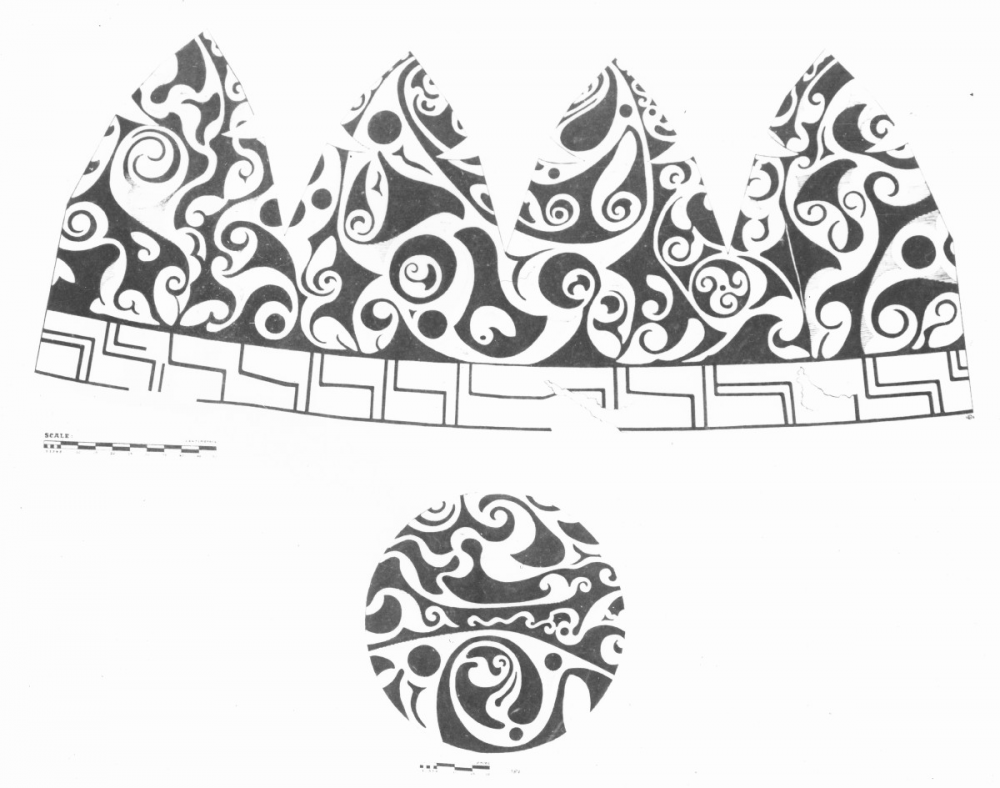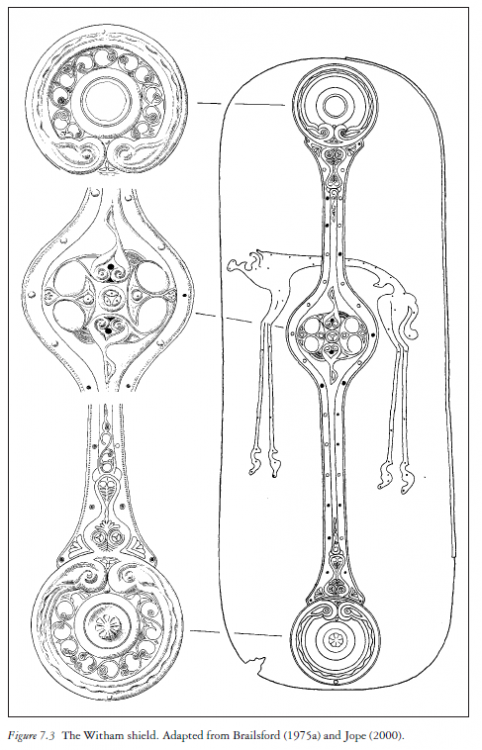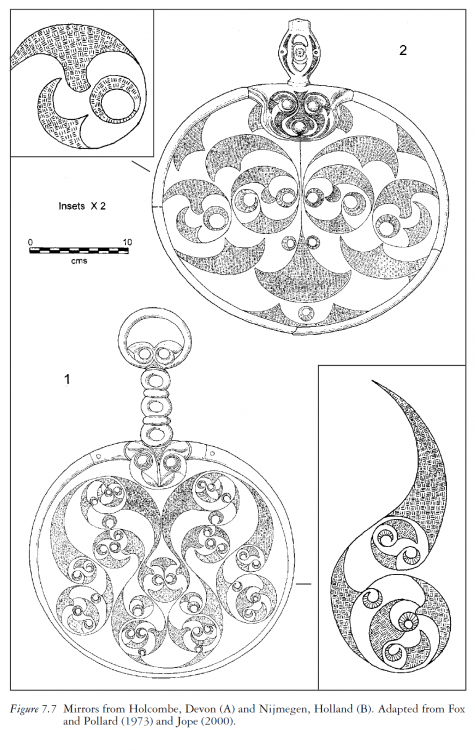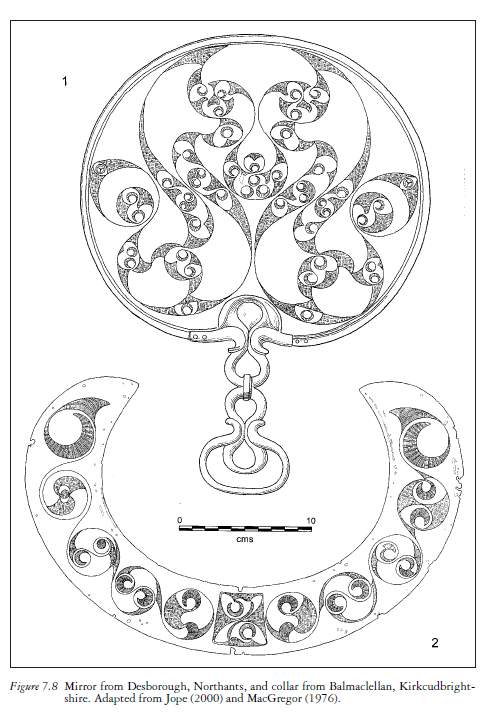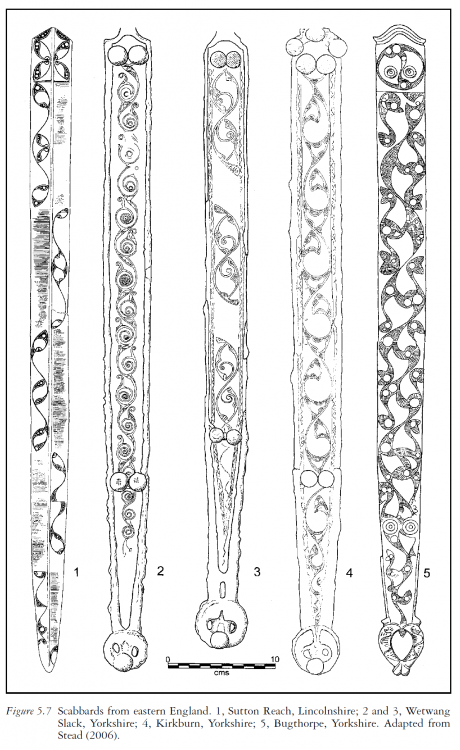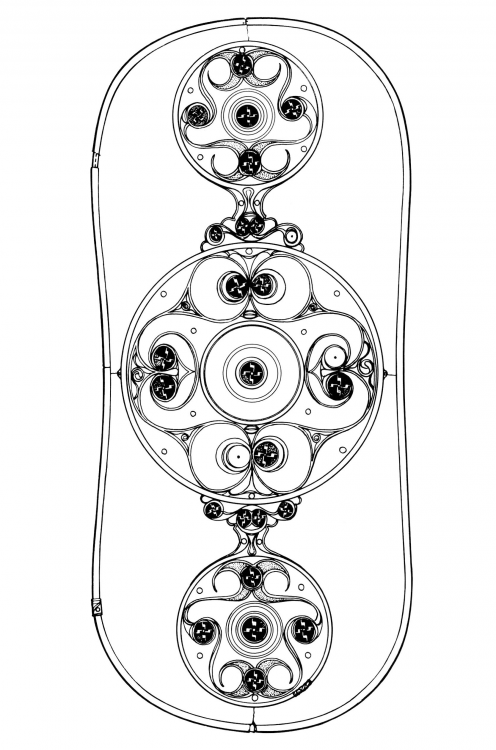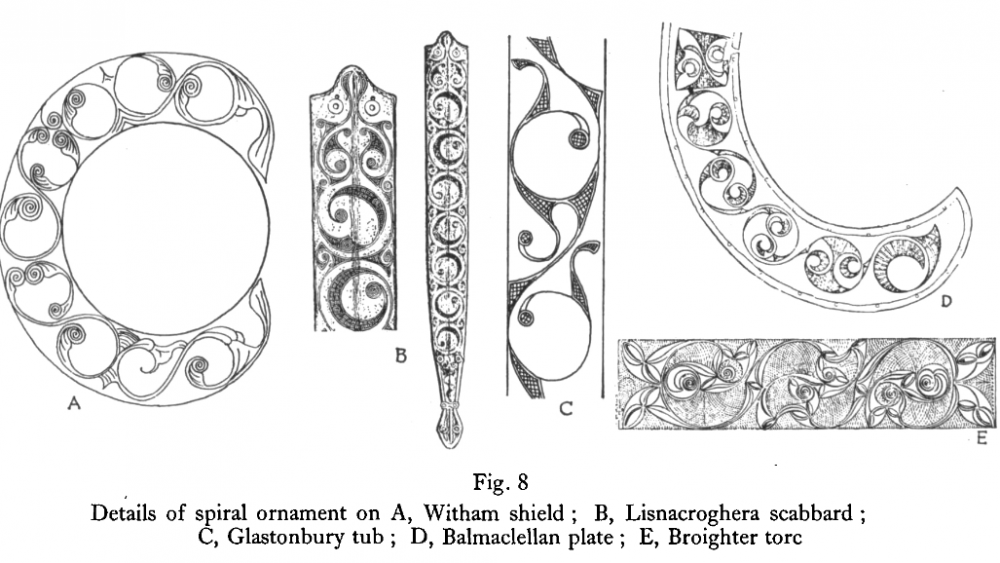-
Posts
2.355 -
Joined
-
Last visited
-
Days Won
79
Everything posted by Genava55
-
Etymological dictionary for Basque language: https://s3.amazonaws.com/academia.edu.documents/30873859/lxwp23-08-edb.pdf?AWSAccessKeyId=AKIAIWOWYYGZ2Y53UL3A&Expires=1546340201&Signature=alC56zsJ9NFdEghRwnVXmJD6k0k%3D&response-content-disposition=attachment%3B filename%3DEtymological_Dictionary_of_Basque_by_R..pdf Some interesting words: Gudari, meaning warrior/combatant (Gudu- for combat). Burtzi, meaning spike/spear/lance. Aide nagusi, meaning clan chief. Buruzagi, meaning leader, chief. Eralle, meaning killer. These are the few words relevant I found and without any borrowing from IE languages.
-
Bronze brooch with vitreous enamel colored in yellow and in blue.
-
Good question. Caesar describe them clearly as tattooed warriors. Probably more naked. However the Britons are far from savage, they are even very careful with their body, they have a lot jewelry as well. A lot of mirrors also. Moreover, during the Roman period the region is reputed for its textile. But it is true that Caesar describes some of them as more pastoral cultures. If you want to go to this direction, there are the "Huldremose Woman", "Tollund Man" and "Borum Eshøj" bog bodies to gives you an idea. But I won't discard the Celtic textile and outfit neither. If you are looking for some inspiration, EBII is not perfected but they have often interesting idea: https://imgur.com/a/Ihl2y
-
.thumb.jpg.b21ca1d0c15fb56b42c39b25a0a40815.jpg)
Iron age Pre and proto-germanic bibliography
Genava55 replied to Genava55's topic in Tutorials, references and art help
Yep, the Germans are better to understand during the imperial period. Before the Roman, it much more complicated and they use mostly a Celtic panoply for warfare. I only put the subject to avoid the same issue we had with the celtic thread. -
.thumb.jpg.b21ca1d0c15fb56b42c39b25a0a40815.jpg)
Iron age Pre and proto-germanic bibliography
Genava55 replied to Genava55's topic in Tutorials, references and art help
Maybe it is better to let the other thread clean like this -
Hi, Since @Lion.Kanzen is very interested about the subject, I can give some references here for people interested about the iron age cultures around germanic regions. The birth of a new world. Barrows, warriors, and metallurgists https://www.academia.edu/36278706/The_birth_of_a_new_world._Barrows_warriors_and_metallurgists Late Bronze and Early Iron Age communities in the northern part of the Polish Lowland (1000-500 BC) https://www.academia.edu/37548759/Late_Bronze_and_Early_Iron_Age_communities_in_the_northern_part_of_the_Polish_Lowland_1000-500_BC_ Expansion of the Pomeranian culture in Poland during the Early Iron Age: remarks on the mechanism and possible causes https://www.academia.edu/2254548/Expansion_of_the_Pomeranian_culture_in_Poland_during_the_Early_Iron_Age_remarks_on_the_mechanism_and_possible_causes The rise and fall of Biskupin and its counterparts https://www.academia.edu/37112278/The_rise_and_fall_of_Biskupin_and_its_counterparts Societies of the younger segment of the early Iron Age in Poland (500–250 BC) https://www.academia.edu/36930633/Societies_of_the_younger_segment_of_the_early_Iron_Age_in_Poland_500_250_BC_ It's a man's world... Germanic societies of the Jastorf and the Przeworsk cultures in southern and central Poland (300 BC –10 AD) https://www.academia.edu/37471966/Its_a_mans_world..._Germanic_societies_of_the_Jastorf_and_the_Przeworsk_cultures_in_southern_and_central_Poland_300_BC_10_AD_ The Przeworsk Culture. A Brief Story (for the Foreigners) https://www.academia.edu/4115218/The_Przeworsk_Culture._A_Brief_Story_for_the_Foreigners_In_U._Lund_Hansen_and_A._Bitner-Wróblewska_eds._Worlds_Apart_Contacts_across_the_Baltic_Sea_in_the_Iron_Age._Nordiske_Fortidsminder_C_7_København-Warszawa_2010 1990: Tribal societies in Northern Gaul. An anthropological perspective. https://www.academia.edu/12485250/1990_Tribal_societies_in_Northern_Gaul._An_anthropological_perspective._Amsterdam 2009: Ethnic constructs in Antiquity. The role of power and tradition https://www.academia.edu/12299580/2009_Ethnic_constructs_in_Antiquity._The_role_of_power_and_tradition Jastorf and Jutland (On the northern extent of the so-called Jastorf Culture) https://www.academia.edu/10276827/Jastorf_and_Jutland_On_the_northern_extent_of_the_so-called_Jastorf_Culture_ Two simple wikipedia articles important to read: https://en.wikipedia.org/wiki/Germanic_parent_language https://en.wikipedia.org/wiki/Proto-Germanic_language#Evolution ;-)
-
Probably, but now the word "German" is another problem. There is no single germanic cultures at this time but several with quite a lot of difference. The Rugians and the Lemovians are suspected to be from the Oksywie/Oxhöft culture or related to the Przeworsk culture. The creation of the Germanic identity is something very debated and it seems that the old view that everything comes from the Jastorf culture is getting less and less popular. Probably that the Przeworsk and the Oksywie cultures, with very warlike traditions, filled the void caused by the Gallic Wars and the creation of the Principate. Celtic warfare was very popular until another successor comes out.
-
Of course I can and I understand your position. Especially because we discuss this in another thread, drawn with different debates. To start I will say that this unit is clearly coming from the first Europa Barbarorum mod. This mod had a huge impact at this time and sadly there was an issue with the guy doing the design of the celtic factions. When the second mod was started, Europa Barbarorum 2, the guy already left the team. But its successor, using the pseudonym Commios on the forum twcenter, has started to check the design of these factions. I talked with him, he is a very nice guy and he is a British archeologist specializing in the iron age. He realized that the previous supervisor relied mostly on Gaelic mythology and medieval folklore to build the celtic factions. Added with over-interpretation to put the maximum of diversity in the game, for example giant hammer bearer because there are Gallo-Roman statues of Sucellus with giant hammers... As you can see now, there is no two-handed swordsman and no giant hammer bearer in the new version of the mod. Some peoples complaint about this, asking why and the team always answered that they were fantasy units removed for good reasons. Recently we talked about this: http://www.twcenter.net/forums/showthread.php?247598-EB-Twitter-updates-Discussion&p=15612194&viewfull=1#post15612194 But I am not only relying on the words of Commios from EB2. This issue with the two-handed swordsman is old and I already debunked the problem in the past on french forum. I read two academic books on the subject, "Guerre et armement chez les Gaulois" by Brunaux and "The Celtic sword" by Pleiner, there is no mention of any two-handed swords in these books. Moreover, Tacitus talk two times of the swords of the Britons and of the Caledonians, saying they are very long. But he never says that they use them with two-hands, in the contrary he says that they are impractical for close-combat and thinks very badly about them (it is a common opinion among the Romans about the Celtic sword, a cliché). Nothing unusual then. I will find it incredible surprising that Tacitus would not precise it if they were used with two-hands. Especially from him, a person that described the uncommon weapons of the Germanic tribes like the round shields being a characteristic of the Rugians and of the Lemovians. If you think about the Thraco-Dacian rhomphaia, the Romans were surprised by this weapon and they described its shape, its use and they even represented it in their Tropaeum Traiani. Therefore I find very unlikely that no classical author never described a two-handed swords if they were in use. There is a relief about the Picts on the Antonine wall and nothing could represents a two-handed sword on it. There are plenty reliefs about the Gauls like the Arc of Orange and there is as well nothing that could suggest this weapon. The difficulty with this debate about the two-handed sword is the same I had with Sundiata in the beginning about the round shields: it is incredible hard to disprove something that doesn't exist. It is well-known ontological problem. Everything about the two-handed sword in the iron age is a matter of deductive logic with common sense premises. We argue about the length of the blade, about the hilt, about the weight and finally about why it is so obviously a good idea that they should have done it. And this kind of reasoning is exactly what differentiates amateurs from experts. Experts built their premises with historical evidences first, to build limits at their reasoning. The explanation is simple: this way to think has no end. You can easily apply this logic to throwing axes, long battle-axe, scale armor, bronze cuirasses, crossbows etc. It works very well with any culture but it is easier to use it on cultures with little information. You only fill the void of evidences with everything you can. In history, this is a common problem, especially for argument "a silentio". Even experts can fell to this. https://en.wikipedia.org/wiki/Argument_from_silence
-
When I did my first draft with some proposals, I had in my mind to make two different rosters. It is a draft, nothing complete, nothing discussed, nothing agreed by the community. It is only proposals for the moment. Nobody gives me an opinion about it. https://www.docdroid.net/YYcHXh2/gauls-britons-tree.pdf https://www.docdroid.net/9fLYce0/gauls-design.pdf My basic idea was to propose a British roster with earlier access to a lance cavalry and a sword infantry. With elite skirmishers in the late stage from Irish and Pictish inspiration. Edit: Caesar sources about the Britons
-
I think it will be the most problematic issue since a lot of player are attached to that unit. I don't see a similar possible unit, even among the Picts. A possible solution is to make a "battle champion" with splendid look and splendid weapons (bronze shield bosses, Kirkburn sword, tattoos). Or a noble swordsman like the Gauls. There is another possible problem, is it good to have exactly the same roster for both Gauls and Britons with only cosmetical change? Because the Gauls are very famous for their cavalry, not the Britons. The Britons seem to be very good at throwing projectiles according to Caesar and Tacitus, maybe better than the Gauls. Maybe a complete change of the Britons roster could be a solution. Will the players using the Gauls agree with this?
-
Hi guys, I should write my thesis and prepare my upcoming courses in GIS, but I realize that the important points were drowned in the discussion and debates in the "celtic reference" thread. For the moment, the Celtic roster of units is the same for both factions and there is a mixing of elements from both continental and insular cultures. Click on the spoiler to see the issues: Future problem to distinguish Britons and Gauls: As you have seen, there are a lot of various shields shapes and shield bosses found in the British islands. There is a very nice looking insular art as well to decorate everything. I can easily found insular swords and spearhead as well. BUT for the helmets there are almost nothing in the British islands. The only pieces are three bronze helmets and two of them could be related to the Roman auxiliaries but we will assume it is not. Therefore no iron helmet is known for the British Islands during the iron age. Another decorative helmet is on the Aylesford bucket but it seems impractical and still a bronze model with this shape. Same thing for the armor, excepted chain mail, there is no proof of cuirass in leather or in linen. It is something the Gauls have learned from the Greeks and the Etruscans but probably it is not something culturally interesting for the Britons who weren't in contact with these cultures. Thus I suggest the following guideline to distinguish the Britons from the Gauls: - Native shield shapes - Native british art - Woad tattoos - Reserving the cap-jockey helmets (like the Meyrick helmet) and the round coolus helmet (Cantebury) for the Britons. There is plenty of others types for the Gauls. See this thread: Edit: Ideas for Celtic rosters Edit: Outdated suggestions for Gauls and Britons, see there for complementary information:
-
Very nice. Maybe avoid mixing the linothorax/cuirass with the chain mail, it is probably to much to wear both.
-
If it is more distinctive, a more circular structure for a Celtiberian hillfort with Las Eretas. A circular structure and enclose/enfold with a continuum of houses:
-
It is a good point. There is no historical problem with the architecture of thatched buildings since it could been used elsewhere by the Iberians. But it is true that for the Celtiberians from Numancia, the difference will be not significative in the architecture since it is already used by the Iberians in game. All this talk and successive proposals seems to emerge from an observation; the current state of the Iberian factions is based on a non-indo-european culture while the others indo-european cultures on the peninsula are not really included in the game while they are very significative in the history of Rome (Three Celtiberians Wars against Rome, two Lusitanians Wars against Rome and some rebellion during the Sertorian War). Somehow the few Celtiberian elements are used opportunistically for the Iberians like two of the current heroes are Celtiberian and Lusitanian and not Iberians. While the others elements from these cultures are not included at all.
-
Anyway, the architecture from the Celtiberian at Numentia is kinda similar to some finds in Aquitaine and Southern France. We can decide later the use. @wackyserious Here a sketch of small Celtiberian hillfort
-
I am not against this idea. Even with this, if we do a separate faction later for the Celtiberians and the others celtic and indo-european cultures of the peninsula having a celtiberian structure for the Iberian is not a problem. The Celtiberians could be the cement between two factions. You can check on the webpage of Numentia for a good overview of Celtiberian architecture (in the first page of this thread). By the way, the Celtiberians are not the only ones that could be included in the roster. Vascones and Aquitanians are good candidates as well and they share a similar language. For example the famous Solduros of the Sotiates (Gauls) are commonly accepted as being a Gallic tradition since there are roman accounts relating this word to the Gauls. But there are also good hints suggesting an aquitanian loanwords => Zordu- in Basque is pronounced Sordu- and Soldu- in other regional dialects and this word means "indebted". Or it could be Salduria from Saldi "the horse", meaning a horsemen class.
-
Wow, you are a boss!
-
I agree. For other inspirations: https://www.artstation.com/artwork/ewo56 https://tiflos.artstation.com/projects/aP4nJ
-
@Lion.Kanzen It comes from there, the Marlborough bucket: http://www.berkshirehistory.com/archaeology/white_horse4.html If you are interested by alternative design to use on shields, there are an interesting tradition of dragonesque brooch in Britain: There are also chariots decorations that could be used as well:
-
-
For other jewelry: Wristlet Wristlet rings https://www.liberation.fr/futurs/2016/10/27/raconte-moi-ta-these-sur-l-artisanat-du-verre-gaulois_1524617 Armring/armlet necklace rings and pearls: reenactment of feminine belt:
-
Beware to not confuse different period, this a Hallstatt neck ring. Not La Tène. This is a kind of neck ring you will never find after 500 BC. Some other example of torque. https://br.wikipedia.org/wiki/Restr:Torque_à_tampons_Somme-Suippe_Musée_Saint-Remi_120208.jpg https://books.openedition.org/cths/2631 http://www.arbre-celtique.com/encyclopedie/torques-299.htm
-

